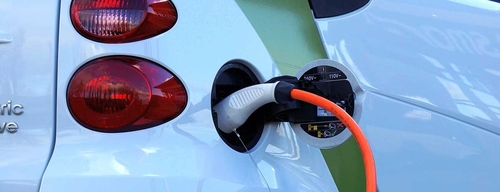Electric vehicles are great. They are fun, quiet, very responsive, and are less expensive to operate on a per-mile basis. Of course, you only get all those benefits if the car is charged and ready to go. An effective charging plan will help you get the most out of your electric vehicle experience.
In this article, we’ll dive into the details about EV charger configuration so you can develop the charging plan that is best for you.
Toss the Old “Gas Station” Mindset
For the past 100 years, we trained ourselves to think of refueling as a place we go when we’re running on “E”. Because we are slaves to the gas pump, the convenience store industry exploded around our forced need to refuel.
With electrical vehicle charging, it’s a completely different mindset. We can start thinking about our cars more like our cell phones, charging overnight and topping off throughout the day if needed.
This way, we’re charging where we already are, rather than making an inconvenient and pricey stop for fuel.
EV Charging Charger Levels
EV Chargers come in three charging categories known as levels.
Level 1 EV Charger
A Level 1 charger is just a 120-volt regular outlet. You can typically get rates between 2 and 4 miles of range per hour of charging. This is convenient but slow. For lower range or plug-in hybrids, this might be acceptable. You may be able to get a full charge overnight. On the flip side, if you are charging a longer-range vehicle, it would take days to reach a full charge.
Level 2 EV Charger
This is the most common charger. A level 2 charger typically will give a full charge to a long-range vehicle overnight, charging anywhere from 10 to 35 miles of range per hour of charge. With most daily travel, well below the range of most fully electrified vehicles, this is the most common charging method.
Level 3 EV Charger
Also known as DC charging, level 3 chargers are the fastest. You can typically charge a long-range vehicle in 30 minutes or less. These are commercial grade. Not only are they quite expensive ($50,000 to $100,000), but they also often require significant upgrades to the electric infrastructure. While it is quick charging, this is not the healthiest charging for your battery. In the charging mindset shift, level 3 chargers have the best fit to cover the needs of long-distance travelers. For example, if driving 600 miles in a 200 miles range vehicle, we need two 30 minutes stop to recharge using a level 3 charger.
Since the most efficient EV charging comes from a Level 2 EV charger, we’ll focus on those.
Understanding Charging Speed
Charge rates are all about how much energy you can transfer to the vehicle at any given moment. We have a great article in our blog about understanding EV charging speeds. As we learn in that article, we want to match the charger output with the car’s input to get the fastest charge. The car will only charge at the rate of the slowest of those two factors.
Smart or Dumb Chargers – Connected Chargers
Chargers can come with all sorts of bells and whistles like changing notifications and control over when to start and stop charging. While useful, most electric vehicles also have the same controls. While most chargers have these features built-in at no extra charge, depending on the EV you purchase, you may not need them. If you have the features on both the car and the charger, you can just pick your favorite app.
Hardwired vs. Plug-In Level 2 EV Chargers
There are two ways to wire the charger. We can wire it directly (hardwired), or we can install a 220v outlet next to the charger and plug the charger into the outlet. There is no technical advantage to either installation method. It might be a cleaner look to hardwire the charger, but if it just plugs in, it is easier to uninstall. It’s all personal preference.
For outdoor EV charger installation, we typically recommend a hardwire connection so there is no need to weather-proof the outlet.
Conclusion
Most of our customers mount a plug-in, level two EV charger with 11.5 kW or more power inside their garage. For customers who install solar panels with a battery backup, the most common charger is an integrated SolarEdge charger. Not only is that a less expensive solution, but solar power is the same type (direct current) as the power in an EV, meaning the electricity might have less loss due to conversion.
With the options above, you can piece together the EV charging installation and plan that works best for you.


